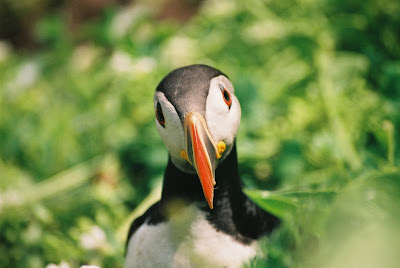¿Quién es más inteligente? ¿cómo miden los científicos esa inteligencia? y, sobre todo, ¿cómo puede una graja aprender física cuando a mí me cuesta un mundo?
Physics? It's All the Same to Birds and Babies
By Michael Torrice
ScienceNOW Daily News
9 October 2009
Even with their tiny bird brains, rooks comprehend basic principles of physics at the same level as a 6-month-old baby—and beyond that of chimpanzees—a new study reports. But whether this understanding conveys any advantages remains an open question.
Rooks and other members of the crow family can manipulate tools and solve laboratory puzzles like those of Aesop's fables. Some scientists believe that these feats suggest the birds have a sophisticated understanding of physical principles—an understanding that allows them to solve problems they wouldn't encounter in the real world.
To further test the theory, Christopher Bird, a zoologist at the University of Cambridge in the United Kingdom, and his colleague Nathan Emery of Queen Mary, University of London, "quizzed" rooks on a basic concept of physics they call "support." The duo adapted a standard experiment: Infants and other primates know that an object will fall if something is not holding it up; they stare for longer than normal at images of a ball or banana floating in midair, for example, suggesting they know that something unusual is going on.
Rooks, it turns out, do the same. The researchers set up a peephole for the birds to peer into. (Rooks are natural peeping Toms and will spy through small holes or cracks looking for other rooks.) On the other side were images depicting eggs in various situations, both possible and impossible. Some eggs rested on a table, whereas others floated above it. In a more subtle twist, the researchers added a picture of an egg hovering in the air while its side or bottom touched the table's side.
In all of the image sets, the rooks peeked about 50% longer at the impossible pictures than they did at those with the egg properly supported by the table. Babies gradually develop similar reactions by 6 months of age, whereas chimps grasp only some parts of the concept of support without recognizing the physical impossibility of an egg "supported" by the side of a table. All of this suggests that the rooks have an understanding of even basic rules of physics that go beyond the comprehension of some primates, the scientists conclude online this week in the Proceedings of the Royal Society B.
Comparative psychologist Daniel Povinelli of the University of Louisiana, Lafayette, says he doesn't find the results that surprising. "How could [rooks] not have these interpretations?" he asks, noting that every creature must understand physical laws to survive. "How else would they know how to land on a branch?"
Bird acknowledges that many animals probably understand the basic idea of support, but he points out that the rooks seem to comprehend its nuances better than chimps do. Other researchers have reported crows solving puzzles that require knowledge of support without going through a period of trial and error. "[Rooks and crows] seem to be flexible enough to transfer these rules to novel situations," Bird says, adding that this transfer implies a more general intelligence than simply remembering physical rules.






